Zihang Wang
LVD-GS: Gaussian Splatting SLAM for Dynamic Scenes via Hierarchical Explicit-Implicit Representation Collaboration Rendering
Oct 26, 2025Abstract:3D Gaussian Splatting SLAM has emerged as a widely used technique for high-fidelity mapping in spatial intelligence. However, existing methods often rely on a single representation scheme, which limits their performance in large-scale dynamic outdoor scenes and leads to cumulative pose errors and scale ambiguity. To address these challenges, we propose \textbf{LVD-GS}, a novel LiDAR-Visual 3D Gaussian Splatting SLAM system. Motivated by the human chain-of-thought process for information seeking, we introduce a hierarchical collaborative representation module that facilitates mutual reinforcement for mapping optimization, effectively mitigating scale drift and enhancing reconstruction robustness. Furthermore, to effectively eliminate the influence of dynamic objects, we propose a joint dynamic modeling module that generates fine-grained dynamic masks by fusing open-world segmentation with implicit residual constraints, guided by uncertainty estimates from DINO-Depth features. Extensive evaluations on KITTI, nuScenes, and self-collected datasets demonstrate that our approach achieves state-of-the-art performance compared to existing methods.
SciArena: An Open Evaluation Platform for Foundation Models in Scientific Literature Tasks
Jul 01, 2025
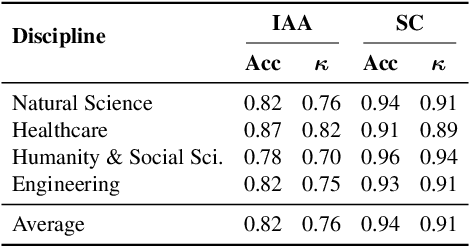

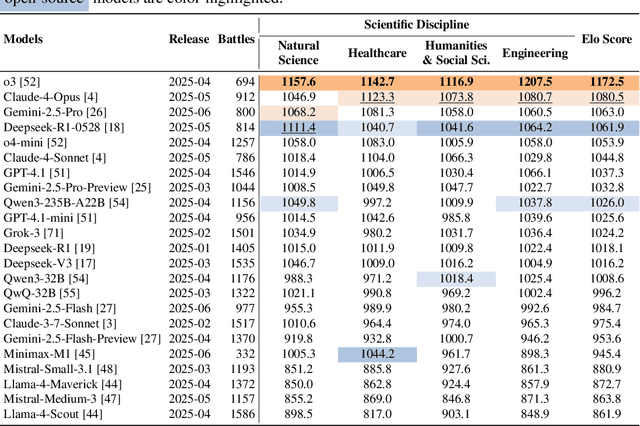
Abstract:We present SciArena, an open and collaborative platform for evaluating foundation models on scientific literature tasks. Unlike traditional benchmarks for scientific literature understanding and synthesis, SciArena engages the research community directly, following the Chatbot Arena evaluation approach of community voting on model comparisons. By leveraging collective intelligence, SciArena offers a community-driven evaluation of model performance on open-ended scientific tasks that demand literature-grounded, long-form responses. The platform currently supports 23 open-source and proprietary foundation models and has collected over 13,000 votes from trusted researchers across diverse scientific domains. We analyze the data collected so far and confirm that the submitted questions are diverse, aligned with real-world literature needs, and that participating researchers demonstrate strong self-consistency and inter-annotator agreement in their evaluations. We discuss the results and insights based on the model ranking leaderboard. To further promote research in building model-based automated evaluation systems for literature tasks, we release SciArena-Eval, a meta-evaluation benchmark based on our collected preference data. The benchmark measures the accuracy of models in judging answer quality by comparing their pairwise assessments with human votes. Our experiments highlight the benchmark's challenges and emphasize the need for more reliable automated evaluation methods.
Multi-dimensional Autoscaling of Processing Services: A Comparison of Agent-based Methods
Jun 12, 2025Abstract:Edge computing breaks with traditional autoscaling due to strict resource constraints, thus, motivating more flexible scaling behaviors using multiple elasticity dimensions. This work introduces an agent-based autoscaling framework that dynamically adjusts both hardware resources and internal service configurations to maximize requirements fulfillment in constrained environments. We compare four types of scaling agents: Active Inference, Deep Q Network, Analysis of Structural Knowledge, and Deep Active Inference, using two real-world processing services running in parallel: YOLOv8 for visual recognition and OpenCV for QR code detection. Results show all agents achieve acceptable SLO performance with varying convergence patterns. While the Deep Q Network benefits from pre-training, the structural analysis converges quickly, and the deep active inference agent combines theoretical foundations with practical scalability advantages. Our findings provide evidence for the viability of multi-dimensional agent-based autoscaling for edge environments and encourage future work in this research direction.
LLM-based Automated Theorem Proving Hinges on Scalable Synthetic Data Generation
May 17, 2025Abstract:Recent advancements in large language models (LLMs) have sparked considerable interest in automated theorem proving and a prominent line of research integrates stepwise LLM-based provers into tree search. In this paper, we introduce a novel proof-state exploration approach for training data synthesis, designed to produce diverse tactics across a wide range of intermediate proof states, thereby facilitating effective one-shot fine-tuning of LLM as the policy model. We also propose an adaptive beam size strategy, which effectively takes advantage of our data synthesis method and achieves a trade-off between exploration and exploitation during tree search. Evaluations on the MiniF2F and ProofNet benchmarks demonstrate that our method outperforms strong baselines under the stringent Pass@1 metric, attaining an average pass rate of $60.74\%$ on MiniF2F and $21.18\%$ on ProofNet. These results underscore the impact of large-scale synthetic data in advancing automated theorem proving.
Enhancing data efficiency in reinforcement learning: a novel imagination mechanism based on mesh information propagation
Sep 27, 2023Abstract:Reinforcement learning(RL) algorithms face the challenge of limited data efficiency, particularly when dealing with high-dimensional state spaces and large-scale problems. Most of RL methods often rely solely on state transition information within the same episode when updating the agent's Critic, which can lead to low data efficiency and sub-optimal training time consumption. Inspired by human-like analogical reasoning abilities, we introduce a novel mesh information propagation mechanism, termed the 'Imagination Mechanism (IM)', designed to significantly enhance the data efficiency of RL algorithms. Specifically, IM enables information generated by a single sample to be effectively broadcasted to different states across episodes, instead of simply transmitting in the same episode. This capability enhances the model's comprehension of state interdependencies and facilitates more efficient learning of limited sample information. To promote versatility, we extend the IM to function as a plug-and-play module that can be seamlessly and fluidly integrated into other widely adopted RL algorithms. Our experiments demonstrate that IM consistently boosts four mainstream SOTA RL algorithms, such as SAC, PPO, DDPG, and DQN, by a considerable margin, ultimately leading to superior performance than before across various tasks. For access to our code and data, please visit https://github.com/OuAzusaKou/imagination_mechanism
Fast Intent Classification for Spoken Language Understanding
Dec 03, 2019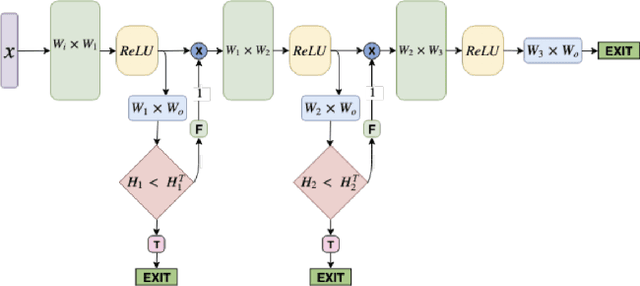

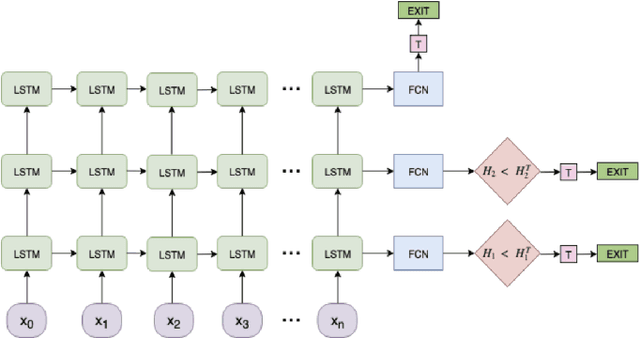
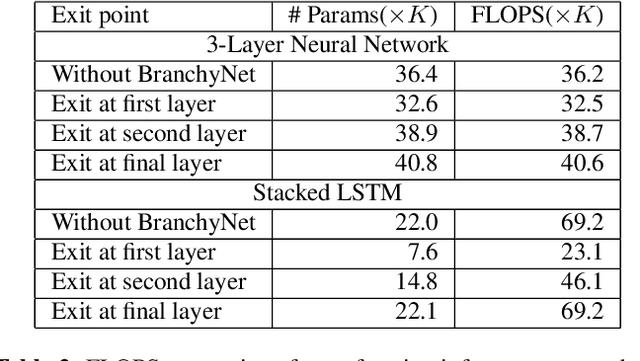
Abstract:Spoken Language Understanding (SLU) systems consist of several machine learning components operating together (e.g. intent classification, named entity recognition and resolution). Deep learning models have obtained state of the art results on several of these tasks, largely attributed to their better modeling capacity. However, an increase in modeling capacity comes with added costs of higher latency and energy usage, particularly when operating on low complexity devices. To address the latency and computational complexity issues, we explore a BranchyNet scheme on an intent classification scheme within SLU systems. The BranchyNet scheme when applied to a high complexity model, adds exit points at various stages in the model allowing early decision making for a set of queries to the SLU model. We conduct experiments on the Facebook Semantic Parsing dataset with two candidate model architectures for intent classification. Our experiments show that the BranchyNet scheme provides gains in terms of computational complexity without compromising model accuracy. We also conduct analytical studies regarding the improvements in the computational cost, distribution of utterances that egress from various exit points and the impact of adding more complexity to models with the BranchyNet scheme.
 Add to Chrome
Add to Chrome Add to Firefox
Add to Firefox Add to Edge
Add to Edge